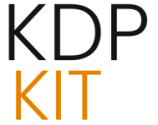Thematic Imperatives: Diversity and Authenticity in Worldbuilding

The contemporary fantasy landscape of October 2025 is defined by a reader base that demands more than simple escapism. The audience seeks worlds that feel both magically infused and genuinely lived-in, populated by characters whose internal lives are as intricately detailed as the external lore. This environment places significant, measurable pressure on the foundational elements of worldbuilding—the magic system, the cultures, and the history—to be intrinsically linked to character motivation. The developmental editor, operating at the nexus of craft and commerce, is increasingly responsible for testing the strength of these foundational ties.
Thematic Imperatives: Diversity and Authenticity in Worldbuilding
The modern fantasy narrative must perform the difficult alchemy of creating the new while remaining tethered to the recognizable truths of the human condition. The expectation is for worlds that are not merely backdrops but active participants in the story’s thematic arguments, particularly concerning issues of power, prejudice, and personal struggle.
Designing Magic Systems as Engines for Character Conflict
A significant editorial trend in twenty twenty five focuses on ensuring that the magic system is not merely a collection of deployed powers or an external problem-solver, but a direct complication generator for the protagonist. The developmental editor advocates for working backward from the character’s key internal struggles to design the system. This contrasts sharply with older methods where the magic was conceived first, followed by the integration of its narrative consequences. Effective worldbuilding now mandates that the core tension between the character’s psychology and the magic’s nature must be established early in the planning phase. For instance, if a protagonist battles an ingrained sense of perfectionism, the magic system should be structured to inherently reward the surrender of control or the acceptance of necessary imperfection, creating a necessary, painful conflict between their desire for absolute mastery and the only path available to true power. The editor challenges the author to ensure that every application of magic forces a difficult, meaningful choice that directly relates to the character’s core psychological landscape, ensuring that limitations, costs, and sources of power are reflections of the narrative’s central philosophical questions. Furthermore, the resource management inherent in a magic system must drive plot; for example, if magic responds to environmental conditions, characters must become students of nature itself, turning resource scarcity into a pressure point that drives conflict and shapes development, rather than simply mapping out resources.
Interrogating Worldbuilding for Unexamined Assumptions
The expansive nature of fantasy worldbuilding—often involving the creation of entirely new histories, religions, and political structures—carries the inherent risk of unconsciously replicating real-world biases or clichés, even when the setting is entirely imaginary. The developmental editor must apply a critical eye to these foundational elements to ensure authenticity. This involves questioning the source and justification for certain cultural norms and critically examining who holds power within the established systems. A major focus in 2025 is to prevent the construction of “cultural monoliths,” where entire races or peoples are presented as uniform archetypes, such as all elves being wise or all dwarves loving gold. The editor ensures that the creation of unique races or societies is handled with a sensitivity that respects complexity, recognizing that real-world groups are not homogeneous. The editor challenges authors to explore cultural interactions—fusion, tension, and exchange between groups—as rich sources of organic conflict. Ultimately, the editor ensures that the world’s complexity serves the story’s thematic goals—often reflecting contemporary anxieties like climate change or social inequity—rather than acting as an unexamined, flattening backdrop for the main action.
Navigating the New Author-Publisher Partnership Models
The commercial realities of publishing in twenty twenty five are forcing a restructuring of the fundamental financial relationship between authors and publishing houses. This reality is particularly relevant for developmental editors who work across both traditionally and independently published works, as the author’s financial footing directly affects their capacity for editorial revision and investment in craft. The rise of alternative financial structures signals a major shift in the leverage balance away from the historical status quo.
Analyzing the Implications of Profit-Share Deal Structures
The emergence and increased discussion of models where authors forgo a traditional upfront advance in favor of a larger share of the book’s eventual profit introduces a new variable into the editorial process. While this is fundamentally a business development, it has immediate creative implications. For example, authors operating under such a model may become more deeply invested in the commercial viability of every editorial change, potentially leading to revision priorities centered on maximizing market reception. Industry discourse in 2025 notes that such profit-share deals, sometimes negotiated to be as favorable as a 10% to 20% author share after publisher recoupment hurdles, necessitate a different editorial conversation. The developmental editor must understand this altered business context—where the author’s risk profile has changed—to better advise on revisions that maximize market viability alongside artistic merit, recognizing that the author is financially carrying a larger portion of the initial risk.
The Role of Editorial Guidance in Agentless Submissions
As debut novelists increasingly look for avenues outside the traditional agent-publisher pipeline, some midsize publishers are adapting their submission requirements to account for the direct submission of manuscripts. This creates a scenario where an author might seek intensive developmental support *before* seeking representation or submission to ensure their manuscript meets a highly polished, professionally vetted standard, compensating for the lack of an agent’s initial structural assessment. The developmental editor’s function is thus becoming an early gatekeeper of quality, essentially providing the structural assessment and high-level vetting that an agent might otherwise offer in an increasingly direct-to-market environment. This pre-submission editorial work becomes a critical component of a streamlined, yet rigorous, pathway to publication for new voices in a market that values autonomy but demands professional execution.
The Technological Interface: AI and Editorial Workflow
The integration of artificial intelligence tools into the creation, revision, and marketing pipeline is no longer a theoretical discussion but an active, evolving reality in twenty twenty five. This presents both powerful assistance and significant ethical quandaries that a modern developmental editor must be prepared to address, both for their own practice and in advising their authors.
Leveraging AI for Enhanced Ideation and Data-Driven Revision
Sophisticated AI tools are becoming commonplace, offering authors assistance in areas ranging from initial ideation and detailed plot structure analysis to real-time tone suggestions. A forward-thinking developmental editor is incorporating these technologies not to replace their core critical function, but to augment it with diagnostic speed. They might utilize AI-driven diagnostics to quickly identify structural weak points, areas of potential reader drop-off, or areas where cultural representation might be inadvertently skewed, thereby freeing up the editor’s time to focus on the high-level, nuanced, human-centric aspects of narrative craft, such as thematic resonance and emotional pacing. Ethical frameworks emerging in 2025 stress that the AI should assist in technical assessments, but human judgment must remain the final arbiter of creative decisions. Publishers are also beginning to assemble lists of approved, vetted AI tools, ensuring those used in the editorial process meet standards for reliability and transparency.
Establishing Ethical Guardrails for AI Integration in Manuscript Development
The controversy surrounding the unauthorized use of copyrighted material to train large language models remains a potent industry concern throughout 2025. Developmental editors must actively advise authors on the ethical implications of using AI for brainstorming or generating text, especially concerning intellectual property rights and authorial voice integrity. The editor is positioned to help authors create clear, internal guidelines for AI use, ensuring that any technological assistance reinforces the author’s original vision and does not inadvertently lead to derivative work or infringe upon established industry standards regarding originality and compensation. Ethical guidelines for 2025 emphasize fairness, transparency regarding AI’s role, and protecting data privacy. Specifically, editors counsel authors to be transparent with audiences about AI-generated elements when applicable, and to continuously monitor AI output for bias, ensuring the technology promotes inclusivity rather than reinforcing existing prejudices.
Reader Psychology Driving Genre Consumption in Twenty Twenty Five
Understanding *why* readers are choosing certain fantasy subgenres over others provides the developmental editor with essential context for shaping a manuscript’s ultimate impact. The editorial process must align the author’s intent with the prevailing emotional needs and consumption habits of the twenty twenty five readership, which shows a dual craving for both intense escapism and profound relevance.
Addressing the Demand for Relatability in Grounded Speculative Fiction
While readers still crave escapism—evidenced by the continued popularity of subgenres like “Cozy Fantasy” and “Romantasy”—they are increasingly drawn to speculative narratives that function as direct mirrors for contemporary societal anxieties. This concept, often termed “Grounded Speculative Fiction,” is expected to see a surge, reflecting growing concerns around technology, climate instability, and societal division. This trend can manifest as Climate Fiction evolving into “eco-fabulism,” which uses myth to address environmental concerns. This genre requires a developmental editor to rigorously ensure that the fantastical elements are deeply tethered to hyper-relatable human experiences. The editor must challenge the author to make the consequences of magical disruption or world-ending threats feel immediately personal, ensuring that the scale of the conflict is balanced by an intimate, psychological portrayal of its impact on the individual psyche.
Crafting Visually Compelling Narratives for a Digital-First Market
Even though the focus is on the text, the visual packaging of a fantasy novel—which is often the first, and most immediate, point of contact for a potential reader browsing online retail platforms—is intrinsically linked to perceived editorial quality and market entry success. Current cover trends in 2025 showcase a definitive move toward visual strategies optimized for small screens. Key design elements include the use of vibrant, bold, and contrasting color palettes, which ensure covers “pop” in the thumbnail view. There is a marked preference for symbolic iconography over literal character portraits, allowing readers’ imaginations to fill in the details, which also helps simplify the design for thumbnail visibility. Furthermore, illustration styles are heavily favored over photorealism, bringing a handcrafted feel back to the genre. A developmental editor, while not a cover designer, must be acutely aware of these visual shorthands. They need to ensure the manuscript’s core themes and tone can be accurately and strikingly represented visually, advising the author on narrative elements that translate effectively into compelling, thumbnail-friendly branding, thereby safeguarding the manuscript’s entry into the crowded digital marketplace.
Strategic Positioning and Future-Proofing Editorial Services
In a market characterized by rapid trend cycling—with genres like cozy fantasy dominating one moment and dark fantasy resurging the next—and constant technological disruption, the value of a developmental editor lies in their ability to help an author create work that is both timely and enduring. This requires a forward-looking strategy that transcends current fads.
Balancing Trend Responsiveness with Timeless Thematic Universality
It is a recognized publishing truth that breakout bestsellers are notoriously difficult to predict, and a single unexpected title can redefine an entire genre. Therefore, while an editor must be aware of the current pull toward specific aesthetics or subgenres—such as the high-stakes escapism of “Romantasy” or the comfort of low-stakes narratives—the ultimate goal remains the cultivation of narrative elements with lasting appeal. The developmental editor’s strategy must be to channel current, recognizable trends—such as increased representation in diversity or genre-blending—into the service of universal, timeless themes, ensuring the manuscript has longevity beyond the immediate publishing cycle’s focus. The editor guides the author to make their diverse casting choices or their incorporation of eco-fiction themes serve a foundational human story, rather than being mere topical checkboxes.
The Necessity of Deep Craft Focus Over Superficial Trend Adoption
Given that authors might only see their written work on shelves years after drafting, writing solely to the immediate market is a risky proposition, as the “hot” subgenre of today may be saturated tomorrow. The most critical contribution a developmental editor makes is to anchor the manuscript in unassailable craft fundamentals, irrespective of the genre flavor of the moment. This involves rigorous, uncompromising work on foundational elements like character arc consistency, thematic resolution, and voice clarity. By ensuring the how of the storytelling is flawless—by building worlds where resources, magic, and societal structures naturally generate the necessary character choices—the editor provides the best possible defense against future market shifts, guaranteeing that the book stands on the strength of its construction, regardless of whether its specific subgenre is currently “in vogue.” This dedication to core narrative architecture is the ultimate hedge against obsolescence in the fast-moving currents of the twenty twenty five fiction landscape.







